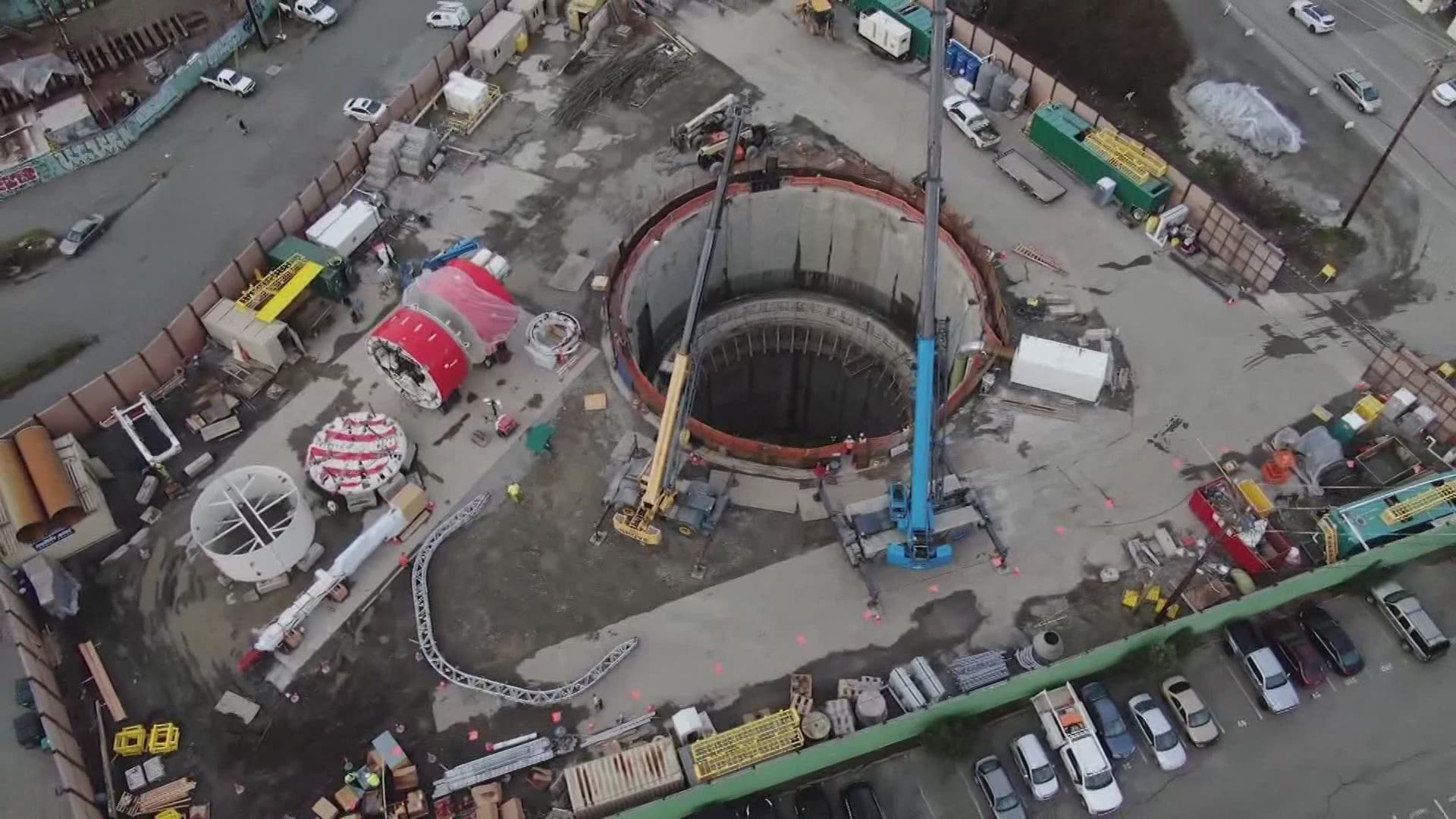SEATTLE — A new 29 million gallon storage tunnel is being built in Ballard to help reduce sewage overflows that can hit our waterways when it rains, Seattle and King County officials said.
At issue is the combined sewer system, where stormwater and sewage share the same pipes in parts of Seattle. That can be overwhelmed during rain storms, sending excess water – and raw sewage – outflows into waterways.
Now, crews have excavated a 122-foot deep pit in Ballard to begin constructing a 29 million gallon storage tunnel, which is expected to come online in 2025. It will be positioned to capture and store excess runoff during storms, until it can be pumped out to the West Point treatment plant and processed.
The tunnel, officials say, is more efficient to store rainwater than tanks, and reduces the need to acquire land.
“With this project, we can solve both our problems, while having the least impact on the neighbors,” said Bruce Kessler, Deputy Director of King County’s wastewater treatment division.
Seattle Public Utilities (SPU) says in 2018, 84% of the city's overflows came from the combined sewer systems in Crown Hill, Ballard, Fremont, Wallingford, Queen Anne, Downtown and Capitol Hill.
The tunnel-boring machine recently arrived from Germany and is currently being assembled near the pit before it will be lowered into place.
While dwarfed by the infamous Highway 99 tunneling machine dubbed Bertha, the hulking machine will produce an 18-foot 10-inch diameter tunnel, similar to many standard transit tunnels in size, officials say.
This summer, it is scheduled to start its 2.7-mile journey towards Wallingford.
Without this intervention, the six outflow sites could overflow a combined 144 times per year. But with this project, Seattle Public Utilities and King County hope to reduce that to just six times annually, or once per site.
“We’ll remove an average of about 75 million gallons of this combined sewage overflow, which is going into Lake Union, Ship Canal, Salmon Bay and eventually Puget Sound,” said Keith Ward, project executive for SPU. “That’s the public health benefit, and the environmental benefit we’re aiming for here.”
Both Seattle and King County are subject to a federal consent decree with the Environmental Protection Agency to drastically reduce overflows.
“Citizens don’t really recognize what’s King County sewage and what is Seattle sewage,” said Kessler. “It’s all our sewage.”
It’s a fairly common problem among fast-growing, older cities that expand beyond their existing infrastructure. SPU and King County also say it’s necessary to prepare for the expected impacts of a climate change future: bigger storms.
“We’re stuck with a legacy from the past, but we’ve been thinking a lot about climate change, and have built in some resiliency for the future in the size of the tunnel,” Ward said.
The new tunneling machine also needs a name, and suggestions are open through March 12 here.

